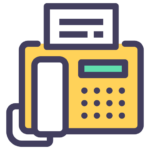Fax over VoIP (Voice over Internet Protocol) is the technology that enables users to send and receive faxes using an internet connection rather than a traditional phone line. With the increasing popularity of VoIP as a communication solution, fax over VoIP has become a popular way to send and receive documents electronically.
Advantages of Fax over VoIP
Cost savings
Fax over VoIP eliminates the need for a dedicated fax line, which saves money on monthly phone bills. Users can send and receive faxes using their existing internet connection, without the need for additional hardware or software.
Mobility
Fax over VoIP is accessible from any location with an internet connection, making it ideal for remote workers or businesses with multiple locations. Users can send and receive faxes using their laptops, smartphones, or tablets, without the need for a physical fax machine.
Improved efficiency
Fax over VoIP allows users to send and receive faxes quickly and easily, without the need to print, scan, or mail documents. This improves the overall efficiency of communication and reduces the time and resources required to process documents.
Enhanced security
Fax over VoIP is more secure than traditional faxing, as it encrypts data during transmission, making it less vulnerable to interception or theft. This is especially important for sensitive or confidential documents.
Disadvantages of Fax over VoIP
Quality issues
Fax over VoIP sends 14kbps data over a line that is meant for 3khz voice. This can result in quality issues, such as distorted or incomplete images, especially when sending or receiving large documents. Users may experience delays or dropped connections, which can result in lost or incomplete faxes.
Compatibility issues
Fax over VoIP may not be compatible with all fax machines, especially older models. Users may need to upgrade their hardware or software to ensure compatibility, which can be costly and time-consuming.
Dependence on internet connection
Fax over VoIP is dependent on a stable internet connection, which can be affected by factors such as bandwidth, latency, and jitter. Poor internet connections can result in lost or incomplete faxes, which can negatively impact communication and productivity.
Security concerns
While fax over VoIP is more secure than traditional faxing, it is still vulnerable to hacking or cyber-attacks. Users should ensure that their internet connection and software are secure and up-to-date to minimize these risks.
Conclusion
Fax over VoIP offers many advantages over traditional faxing, including cost savings, mobility, improved efficiency, and enhanced security. However, it also has some disadvantages, such as quality and compatibility issues, dependence on a stable internet connection, and security concerns. Users should weigh the pros and cons of fax over VoIP carefully and consider their specific needs and requirements before deciding to use this technology. They should also ensure that they have the necessary hardware, software, and security measures in place to ensure a seamless and secure faxing experience.
